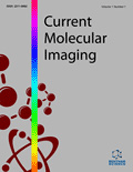Abstract
Fluorescence imaging is nowadays a powerful tool for laboratory animal studies in oncology. This emerging technology is in full development and is becoming a complementary tool in clinics for specific cancer diagnosis. For now, it allows detection with a high spatio-temporal resolution of specific signals like tumor markers in small animals. Different ways of in vivo imaging exist: epifluorescence macroscopy, intravital imaging to visualize molecular processes combined or not with multiphoton excitation and fluorescence tomography to spatially detect deeper cellular phenomena. These techniques are impaired by the tissue optical properties: auto-fluorescence, photon scattering in tissues and by limited depth penetration of the excitation beam in tissues. To overcome these limits, scientists are developing spectral imaging, far-red imaging technologies and associated dyes to observe tumor cells biology over longer periods, on larger volumes and on a higher number of organs, thus improving the knowledge in tumor pathophysiology.
A challenge in oncology is to improve early detection and prevention using novel targeted cancer diagnostics. Detection requests specific recognition. Tumor markers have to be ideally present on the surface of cancer cells. Their targeting with ligands coupled to imaging agents make them visible/detectable. In this review, after a short introduction on in vivo fluorescence imaging theories and a description of the different existing modalities, we will focus on the recent outcome of basic studies in the design of new probes and devices used to detect tumor cells.Keywords: Fluorescence microscopy, small animal, probe, tumor marker, intravital, oncology, animal studies, cancer diagnosis, epifluorescence, tomography
 30
30

